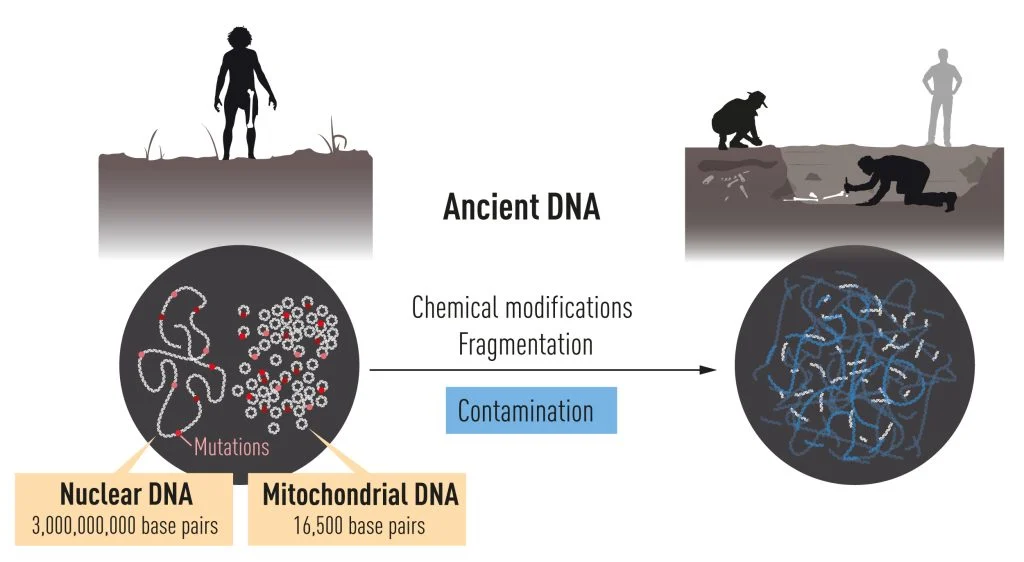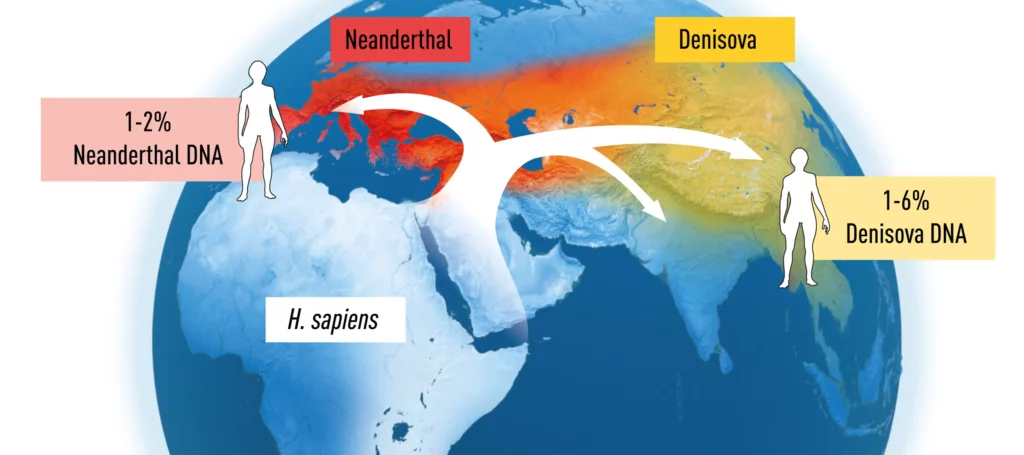One of the most fundamental questions that scientists are trying to answer is how we all got here. The story of human evolution is no straight line, but rather one of many twists and turns. We had many ancestors and relatives, but somehow Homo sapiens is the only species of our genus that is left alive. Why?
There are still many puzzling mysteries about our evolution, but thanks to Svante Pääbo, the prodigious head of the Max Planck Institute of Evolutionary Anthropology, we’re now more enlightened. The Swedish biochemist was the first to sequence the entire Neanderthal genome, revealing that these extinct relatives interbred with modern humans, and also discovered the existence of a previously unknown human species, known as the Denisovans, from DNA extract from a single finger bone found in a Siberian cave. Pääbo’s contribution to science cannot be overstated, so it was very fitting to hear that today he was awarded the much-deserved 2022 Nobel Prize in Physiology or Medicine.
Neanderthal love affairs and a new field of science

DNA, the blueprint of all living things, can reveal a phenomenal amount of information about the lives of ancient people, even in the absence of traditionally archaeological evidence such as artifacts, pottery, tools, and bones. On the other hand, old DNA is notoriously hard to read because it immediately starts to decay the moment an organism dies.
When Pääbo first started out as a biochemist at Uppsala University more than 30 years ago, he thought the oldest DNA it was possible to extract would be from people who lived only a few years ago. It was only in his wildest dreams that resurrecting DNA oldest than hundreds of thousands of years was possible — and he actually made these dreams come true.
During his early career, Pääbo noticed that barely anyone was extracting DNA from long-dead tissue, so with great enthusiasm, he set out to perform his own ancient forensics. He first started with a piece of liver, which he left to decompose for many days, and extracted DNA from it. Later, he started working with Egyptian mummies and managed to isolate short segments of genetic sequences from a 2,400-year-old infant boy.
After moving to Munich University in the early 1990s, Pääbo turned to his most ambitious project: sequencing Neanderthal DNA. There was nothing more exciting to research for Pääbo, but museum curators were much less enthused to let him take samples from their precious Neanderthal fossils. It took him years of convincing work to finally be allowed to extract DNA from the arm bone of the original Neander Valley skeleton, the specimen that gave the extinct human relative its name.
Pääbo extracted the mitochondrial genome, the small circular chromosome found inside mitochondria that is exclusively maternally inherited. Mitochondrial DNA is much smaller than nuclear DNA, containing just a fraction of the genes found in a cell. However, it’s much more compact and is present in more copies, which allowed the Swedish scientist to sequence a region of mitochondrial DNA from a 40,000-year-old Neanderthal bone.
This was a monumental achievement that for the first time revealed the genetic sequence of an extinct relative. Pääbo took things to the next level in 2010, taking advantage of rapid advances in technology to sequence the first complete genome of a Neanderthal, including nuclear DNA. This research showed that Neanderthals shared a common ancestor with Homo sapiens as early as 800,000 years ago.
Previously, artifacts and fossils found in Europe showed that modern humans and Neanderthals shared the continent for several thousand years and must have interacted. People could only imagine what kind of cultural exchanges took place between the two species of humans, but Pääbo was able to reveal at least one undeniable thing: Neanderthals and Homo sapiens interbred. To this day, people of European or Asian descent have inherited between 1% and 4% of their genomes from Neanderthals.
A new species of human

All of these are remarkable achievements for any scientist, but Pääbo wasn’t done just yet. In 2008, he sequenced DNA from a 40,000-year-old finger bone fragment found in the Denisova cave, in southern Siberia. The conditions inside the cave proved extremely fortuitous, as the DNA was exceptionally well preserved for its age. When the DNA was sequenced, everyone was blown away when they found that the DNA didn’t match any known species of human. Pääbo had, in effect, identified a new species of human now known as the Denisovans.
Comparative analyses later showed — as was the case with Neanderthals — that modern humans intimately mingled with Denisovans. Today, populations in Melanesia and other parts of South-East Asia have up to 6% Denisova DNA.
Thanks to Pääbo’s contributions, an entirely novel field of science has emerged, known as paleogenomics, which is the study of ancient genomes. The techniques pioneered by the Swedish scientists are now routinely used in labs across the world to untangle the complex web of human evolution to piece apart what makes modern humans unique but also ultimately answer how we got here in the first place.

Perhaps its worth noting that Pääbo’s career was inspired by his biochemist father, with whom he shared a complicated relationship. Pääbo was the illegitimate child of Sune Bergström, who won the 1982 Nobel prize for discovering prostaglandins. Bergström had an affair with Pääbo’s mother, the Estonian chemist Karin Pääbo, when the two worked in the same lab. Bergström’s kept Pääbo’s existence a total secret from his family, and would visit Pääbo as a child on Saturdays. “It was pretty weird with hindsight,” Pääbo said.
Bergström died in 2005, and it was only then that his family learned about Pääbo. Unfortunately, Pääbo’s father didn’t live to see the day that he and his son would form a rare union. Previously, only three other father-child pairs won the Nobel Prize. William Bragg won the Nobel for Physics in 1915 and Lawrence Bragg in 1915. Physicist Niels Bohr was awarded the Nobel in 1922 and his son Aage N. Bohr in 1975. Hans von Euler-Chelpin won the Nobel Prize for Chemistry in 1929 and his son Ulf von Euler for Medicine in 1970.
Today, Pääbo was celebrated by the Nobel Assembly at Karolinska Institutet in Stockholm “for his discoveries concerning the genomes of extinct hominins and human evolution.” The distinguished award is accompanied by a cash reward worth 10 million krona ($900,000).


